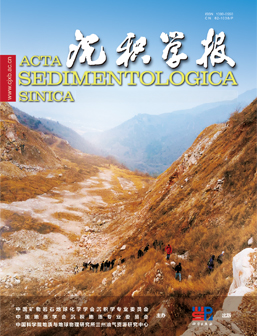Sedimentary characteristics and exploration potential analysis of migmatites in the Ordovician Wulalike Formation, western edge of the Ordos Basin
doi: 10.14027/j.issn.1000-0550.2024.120
- Received Date: 2024-07-08
- Available Online: 2025-04-15
-
Key words:
- Ordos Bain /
- Western margin /
- Wulalike Formation /
- Migmatites /
- Exploration potential
Abstract: In recent years, several exploration wells in the Ordovician Wulalike Formation in the western edge of Ordos Basin have obtained industrial gas flow, breaking through the restricted zone of migmatites exploration from shallow water to deep water. However, the sedimentary characteristics and exploration potential are still unclear. In order to enhance the geological understanding of deep-water migmatites and guide the next step of exploration work, typical drilling and outcrops samples combined with thin sections, and related experimental data are used to conduct systematic research on the lithofacies sedimentary facies characteristics, distribution patterns migmatites, and exploration potential of source reservoir cap combination. Research has shown that: ① the Ordovician Wulalike Formation in the western margin of the Ordos Basin mainly develops 22 types of lithofacies and 12 types of lithofacies combinations, reflecting the sedimentary characteristics of platform, shelf, slope, and basin facies, respectively; ② The Wulalike Formation as a whole features paleogeographic pattern and stratigraphic distribution characteristics of "low in the west and high in the east, thick in the west and thin in the east". Its bottom is the largest transgressive surface in the Ordovician period, and two complete third-order sequences are developed upwards. During the sedimentary period of SQ1 in the lower part, the water body was generally deep, while the depth of seawater becomes shallow upwards, and the sedimentary facies belt shows a trend of narrowing and retreating westward.③Combining the relationship between Wulalike Formation and the Upper Paleozoic configuration, it is believed that there are multiple sets of source reservoir cap combinations within the Wulalike Formation. Among them, the intertidal reef facies limestone in sequence SQ2 and the slope-basin facies shale in sequence SQ1 have a good spatial matching relationship, corresponding to limestone gas reservoirs and shale gas reservoirs, respectively. These are new Ordovician field of key deepening research in the western margin area, and the future exploration potential cannot be ignored.
| Citation: | Sedimentary characteristics and exploration potential analysis of migmatites in the Ordovician Wulalike Formation, western edge of the Ordos Basin[J]. Acta Sedimentologica Sinica. doi: 10.14027/j.issn.1000-0550.2024.120 |






 DownLoad:
DownLoad: